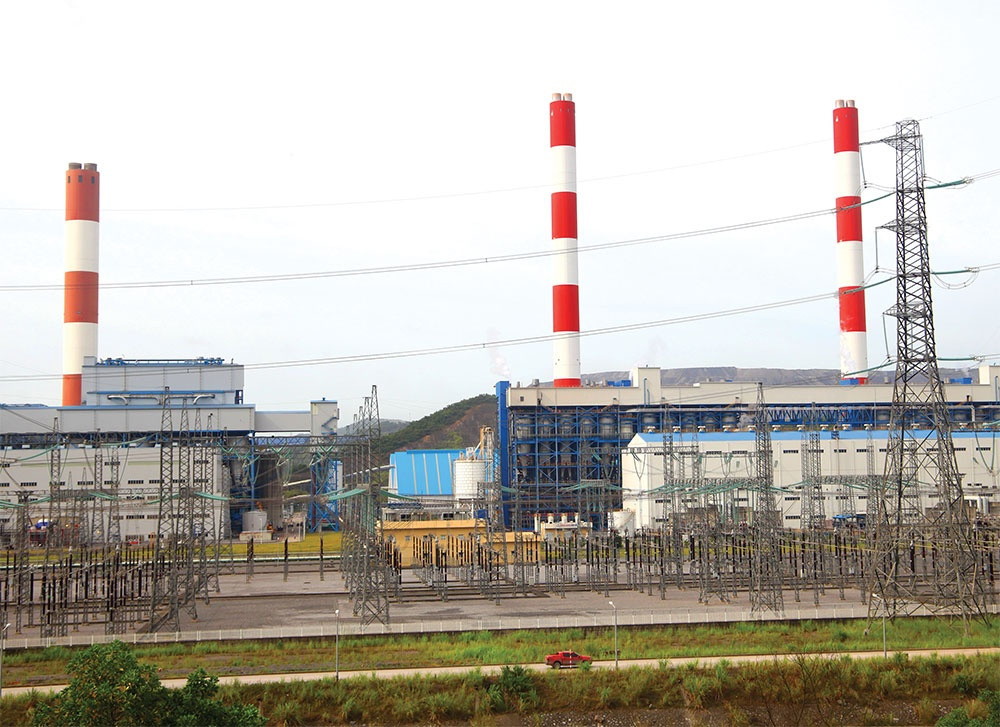The government’s plan to reduce fossil fuel use and increase clean energy sources is facing major obstacles, such as dependence on coal, and without new investment the supply will decrease faster than demand, possibly leading to energy shortages.
Cam Pha Thermal Power Station under state-run Vietnam National Coal and Mineral Industries Group (Vinacomin) is temporarily shutting down due to lack of coal.
A representative of Cua Ong Coal Selection Company, a coal supplier for Cam Pha Thermal Power, confirmed, “Since the beginning of the year, the company has not supplied coal to the station.”
The total capacity of the power station is 600MW. In normal times, it annually supplies the market with 3.68 billion kWh.
Dang Thanh Hai, general director of Vinacomin, at a conference on October 20, asked the station to resolve the problem and return to production. He asserted, “Vinacomin will ensure sufficient coal supply according to the signed contract.”
 |
| The current demand is being met with a mix of domestically produced and imported coal, photo Le Toan |
The coal demand for electricity production continues to increase, despite Vinacomin’s efforts to meet the current demand with domestically produced and imported coal. In the first nine months of 2022, the company had to import about 3.14 million tonnes to mix with domestically produced coal to supply thermal power stations.
Coal for electricity in 2022 is expected to be about 35.5 million tonnes, equal to 101 per cent of the plan and up 4 per cent compared to 2021.
According to Vinacomin’s plan, the coal output for power stations in 2022 shall reach 35 million tonnes, but the supply depends heavily on imports. In the fourth quarter of the year, the company plans to import about 1.9 million tonnes of coal to mix with domestically produced coal.
Currently, Vinacomin and Dong Bac Corporation account for about 95 per cent of the total coal production of the whole industry.
Vinacomin’s leaders, however, are concerned that coal imports may not meet this year’s plan. Current solutions, such as stockpiling and domestic coal blending, cannot make up for the shortage of coal.
Most of the coal inventory is in Mao Khe and Uong Bi, but it cannot be consumed directly by power station and must be mixed with imported coal or other domestic coal sources.
According to many domestic analysts, the European Union plans to keep coal power stations running for longer. This could make it more difficult for Vietnam to import coal in the last two months of the year.
In the fourth quarter, in addition to coal for power production, Vinacomin is expected to import up to two million tonnes, if including coal demand for households, bringing the total for 2022 to up to 5.1 million tonnes.
According to a forecast from the Ministry of Industry and Trade (MoIT), by 2030, coal power will account for nearly 43 per cent of Vietnam’s electricity capacity, compared with more than 38 per cent at present.
The country has faced severe power shortages since 2021 as electricity demand grew faster than new power stations. As a result, Vietnam will have to import 680 million tonnes of coal by 2030.
The draft development strategy for the coal industry by the MoIT from August shows that demand for coal continues to increase.
It is forecast that Vietnam’s coal demand will be around 94-97 million tonnes in 2025 and peak at about 125-127 million tonnes in 2030. By 2045, coal demand could fall to 73-76 million tonnes annually.
The MoIT’s data also shows that domestic coal consumption increased rapidly from 27.8 million tonnes in 2011 (accounting for 62.2 per cent of total coal consumption) to about 53.52 million tonnes in 2021 (accounting for 96.7 per cent). Thus, the volume of coal consumed today is more than twice as high as in 2011.
Based on coal resources and reserves, geological conditions, and mining technology, the MoIT expects the coal mobilisation capacity to increase by 2030 to reach 43-47 million tonnes of commercial coal per year.
Afterwards, it is expected to reduce to about 45 million tonnes of coal in the next decade. To meet the coal demand for production, Vietnam is expected to import about 50-83 million tonnes between 2025 and 2035 and then gradually decrease to about 32-35 million tonnes in 2045.
In the forecast, the MoIT commented that potential coal resources are limited and mining conditions are increasingly difficult, leading to higher production costs. In addition, the coal industry cannot dramatically increase mining output and depends heavily on natural factors.
Mining enterprises are also facing labour shortages due to the harsh environment, health effects, and the general energy shift in the coal industry, which also requires companies to switch to products with fewer emissions.
According to the MoIT, domestic production and consumption may change when the state organises an investigation and assessment of the Red River Delta coal basin and some other basins in the continental shelf of Vietnam.
The state may promulgate appropriate mechanisms and policies to support and promote enterprises to invest in coal exploitation abroad, as well as seek and diversify sources of imported coal to Vietnam.
Source: VIR